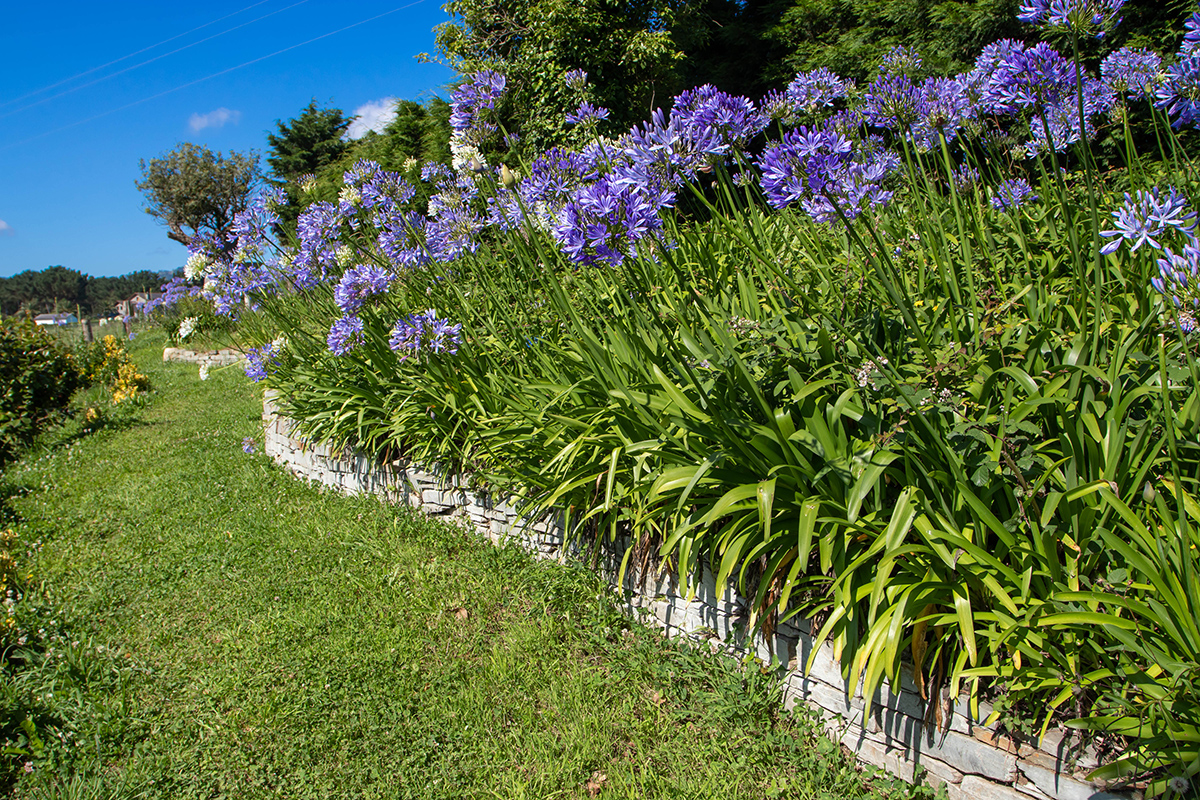Seasonal Agapanthus Care: Planning For Wintertime and Summer
Seasonal Agapanthus Care: Planning For Wintertime and Summer
Blog Article
Grasping the Art of Agapanthus Treatment: Essential Steps for Healthy And Balanced Development and Vivid Blossoms
In the world of gardening, the growing of agapanthus stands as a gratifying endeavor for those that seek to nurture these classy blooming plants. With their striking blossoms and stylish vegetation, agapanthus has actually caught the focus of gardeners worldwide. However, accomplishing ideal growth and lively blossoms calls for a nuanced approach that incorporates different necessary steps. From picking the appropriate variety to mastering pruning methods, the journey towards cultivating thriving agapanthus plants is multifaceted and holds the vital to unlocking the complete capacity of these organic treasures.
Choosing the Right Agapanthus Variety

When selecting the best Agapanthus selection for your garden, think about elements such as climate viability, blossom color, and growth routine. In addition, take into consideration the climate in your area to make certain the Agapanthus selection you pick can grow in your certain conditions. Understanding the development behavior of different Agapanthus selections is critical for appropriate positioning within your garden.
Perfect Planting Conditions
Taking into consideration the optimum ecological demands is important for successful Agapanthus growing. Agapanthus prospers in well-draining soil with a somewhat acidic to neutral pH degree. When growing, pick a place that gets full sunshine to partial shade. In hotter climates, supplying some mid-day shade can prevent scorching of the fallen leaves. Agapanthus plants are sensitive to cold temperature levels and should be shielded from frost throughout wintertime months.
To guarantee healthy development and vivid flowers, plant Agapanthus bulbs at a deepness of regarding 2-4 inches and room them 8-12 inches apart. Mulching around the base of the plants helps maintain dampness and suppresses weed development.
Watering and Feeding Tips
Maintaining appropriate dampness degrees and providing important nutrients are crucial elements in the treatment program for Agapanthus plants. It is important to strike an equilibrium when it comes to watering Agapanthus. These plants favor consistently wet dirt but are vulnerable to root rot if overwatered. Throughout the growing season, water deeply when a week, making certain the soil is well-draining to avoid waterlogging. In hotter environments or during periods of drought, more constant watering may be essential to keep the soil uniformly wet. However, minimize watering in the winter season to stop waterlogged conditions.
Feeding Agapanthus is necessary for advertising healthy and balanced development and respected blooms. Use a well balanced plant food, such as a 10-10-10 formula, in the very early spring as brand-new growth arises. Repeat this application every 6-8 weeks throughout the expanding period. Prevent excessive fertilization, as it can bring about rich vegetation at the expenditure of flowers. Always follow the maker's instructions for correct dilution and application methods. By adhering to these watering and feeding ideas, Click Here you can ensure your Agapanthus plants flourish and create vivid, resilient blossoms.
Trimming Strategies for Agapanthus
Trimming Agapanthus plants at the ideal times and with correct strategies is essential for keeping their wellness and advertising optimal development and flowering. The suitable time to prune Agapanthus is in late winter months or very early springtime prior to brand-new growth arises.
Deadheading invested flowers can also reroute the plant's power right into producing even more blooms rather than setting seeds. If you want to accumulate seeds for breeding, leave some flowers to mature and dry on the plant.
Bear in mind to make use of clean, sharp devices to make precise cuts and lower the risk of introducing illness. Agapanthus. Routine pruning will certainly aid keep your Agapanthus looking healthy and balanced and cool while guaranteeing a bountiful display of gorgeous blooms
Dealing With Typical Bugs and Conditions
After making sure proper trimming techniques for Agapanthus, it is vital to resolve usual parasites and diseases that can impact the health and vigor of these plants. Agapanthus plants are usually sturdy yet can still succumb specific concerns. One typical pest that impacts Agapanthus is the Agapanthus gall midget. This small, orange fly lays its eggs in the vegetation, bring about distorted development and blossom buds that fail to open. To combat this insect, prune and damage any type of afflicted plant parts and consider utilizing insecticidal soap.
Additionally, Agapanthus plants can endure from root rot if they are grown in poorly draining dirt. By being attentive and taking timely action versus insects and conditions, you can help your Agapanthus plants flourish and generate dynamic flowers. Agapanthus.

Conclusion
In verdict, mastering the art of agapanthus treatment entails picking the right selection, offering ideal planting problems, appropriate watering and feeding, ideal here pruning methods, and attending to sites usual bugs and diseases. By adhering to these necessary actions, you can make certain healthy and balanced growth and dynamic blossoms for your agapanthus plants. Remember to routinely keep an eye on and maintain your plants to promote their general wellness and longevity.
To guarantee healthy and balanced development and vibrant blooms, plant Agapanthus bulbs at a depth of regarding 2-4 inches and room them 8-12 inches apart. By complying with these watering and fertilizing tips, you can ensure your Agapanthus plants thrive and create vivid, durable blossoms.
One usual parasite that affects Agapanthus is the Agapanthus gall midget. In addition, Agapanthus plants can experience from root rot if they are grown in poorly draining soil. By following these essential steps, you can make certain healthy development and lively blooms for your agapanthus plants.
Report this page